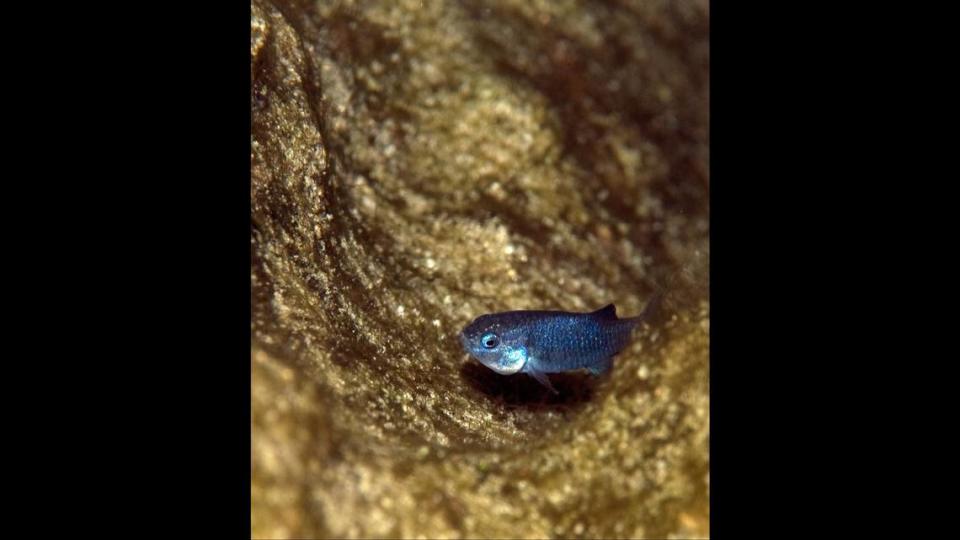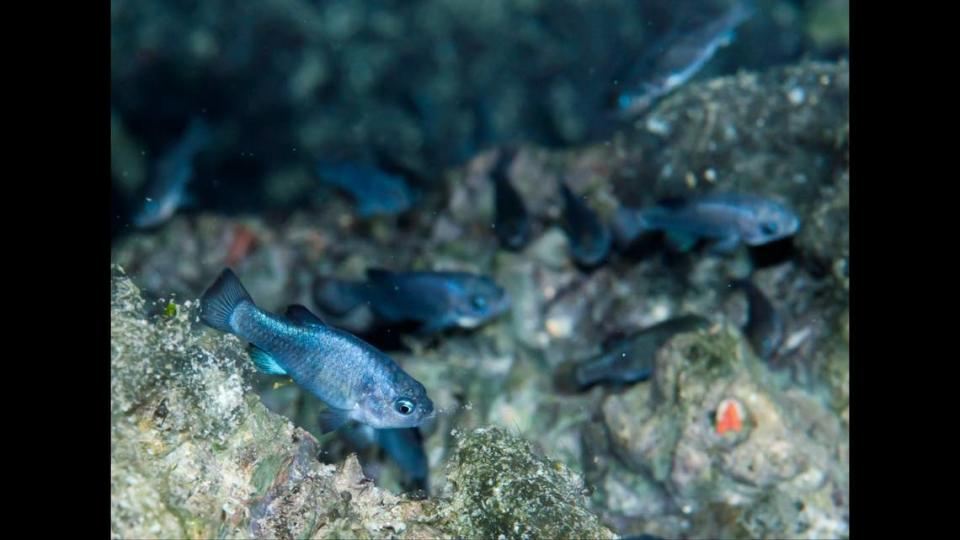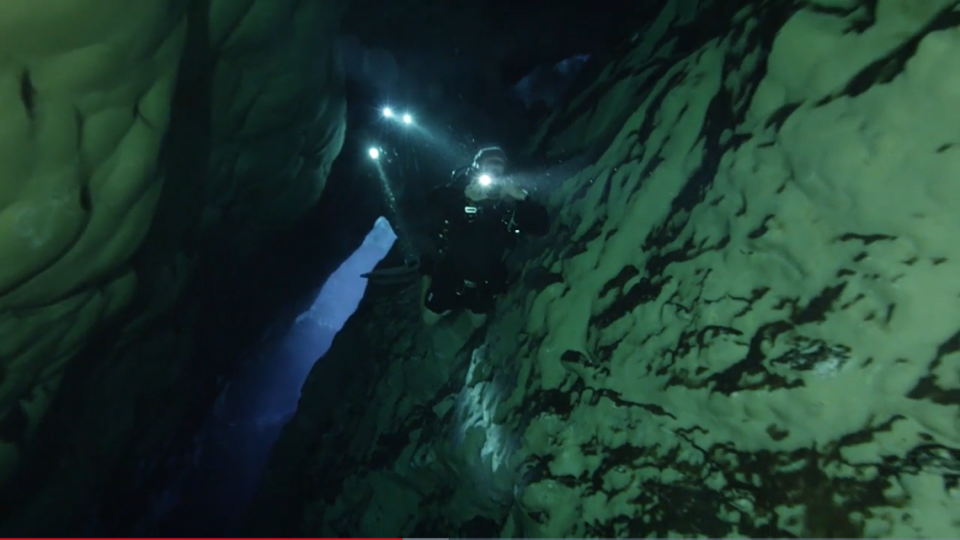Iridescent creature’s population dropped to 35 in Death Valley. Now there’s good news
The Devils Hole pupfish is among the rarest fish in the world.

For years, the fish’s population dwindled, hitting an “all-time low of 35 in 2013,” the National Park Service said in an April 29 news release.
In recent years, however, that number has been growing, with this spring’s count hitting 191, a 25-year high, NPS said.
“This is good news for the critically endangered fish living in Death Valley National Park,” NPS said.
Unique dwelling
The pupfish, which “earned their name due to the playful way in which they frolic about like puppies,” can only be found in Devils Hole, “an oasis within Death Valley unlike any other in the world,” the National Park Foundation said.
With a temperature of 92 degrees, the foundation said it is an “unlikely climate for any fish to survive, let alone thrive.”
The species “live in the smallest habitat of any vertebrate species on the planet,” according to NPS.
The fish occupy a “compact area of shallow water,” just before the cavern drops to “a 500-foot pit” which has yet to be explored, the foundation said.

Though there have been efforts to create similar conditions for pupfish in captivity, the foundation said “this small ledge remains the sole spawning and feeding shelf for the fish.”
Not only is Devils Hole unique for its rare fish but also in that it is “an unexpected indicator of seismic activity around the world,” the foundation said.
“Large earthquakes as far away as Japan, Indonesia and Chile have caused the water to ‘slosh’ in Devils Hole like water in a bathtub,” according to NPS.
With waves reaching as high as two meters, NPS said such events can sweep “clean the shallow shelf so important to the pupfish.”
Population increasing
After a 1952 presidential proclamation declared Devils Hole a part of Death Valley National Monument, renamed Death Valley National Park in 1994, the pupfish was listed as an endangered species in 1967, the foundation said.
“Since the 1970s, researchers and divers have made it their mission to count the population twice a year, a two-day process with numerous dives,” the foundation said.
The fish are counted each spring and fall, according to NPS.
Up until the mid-1990s, NPS said experts “counted about 200-250 Devils Hole pupfish each spring.”
For about two decades, however, their population averaged about 90 fish, hitting 35 fish in 2013, NPS said.
In recent years, NPS said the rare fish’s population has been growing.
So much so that 263 fish were observed during the fall 2022 count, the U.S. Fish and Wildlife Service.
This spring’s count was done over a two-day period in early April, according to NPS.

“You’re in complete darkness and can’t see your hands in front of you,” Jeffrey Goldstein, a biologist with NPS, told the Las Vegas Review-Journal. “Then you have these fish that are popping out of little hiding spots between the rocks.”
Though this spring’s count of 191 is down from fall 2022’s count of 263, the newspaper reported that it “may fall within a margin of error.”
The higher number of “pupfish this time of year could signal important changes in the ecosystem,” NPS said.
While there isn’t an exact source as to why the spring’s count is higher than in years past, NPS said Hurricane Hilary in August 2023 may have helped.
“Flooding can have negative effects on the fish in the short-term,” NPS said. “However, Hilary mostly benefited the fishes’ ecosystem by adding nutrients that washed off the surrounding land surface in a fine layer of clay and silt.”
Biologists counting the fish this spring noted they were “in remarkable condition and were very active,” NPS said. Experts also observed “many courting and spawning pairs.”
“It was really encouraging to see such a large number of young fish during these spring dives,” Brandon Senger, a supervising fisheries biologist with the Nevada Department of Wildlife, said in the release. “Conditions within Devils Hole looked healthy, so we have hopes of high recruitment over the coming months that will lead to a large population in the fall.”
Despite ‘desert tsunami,’ one of the world’s rarest fish are thriving in Death Valley
Video shows ‘desert tsunami’ in Death Valley triggered by earthquake 1,500 miles away
Stunning satellite images show just how big Death Valley’s lake really was. See them

